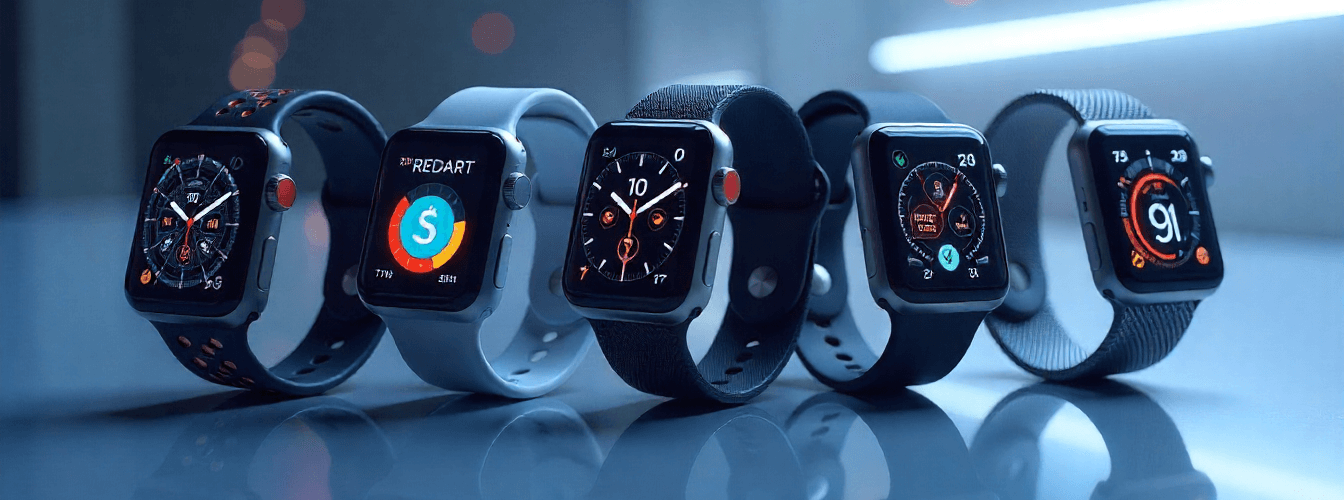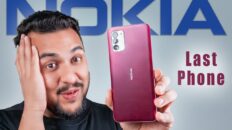The world of wearables is more dynamic than ever, making a thorough smartwatch review essential for anyone looking to upgrade or make their first purchase. As we navigate 2026, smartwatches have evolved from simple notification mirrors to sophisticated health companions, powerful productivity tools, and even fashion statements. With an array of options available, pinpointing your primary needs is the crucial first step in finding your perfect wearable.
Consider your daily routine and what you hope to gain from a smartwatch. Are you an avid runner tracking every metric, a busy professional needing to stay connected, or simply looking for a stylish accessory that offers basic smart features? Your lifestyle will dictate which features are priorities and which can be overlooked, streamlining your decision-making process significantly.
Fitness & Health Tracking Priorities
For many, a smartwatch is synonymous with a personal health coach on the wrist. In 2026, fitness and health tracking capabilities have reached new heights, offering insights into everything from heart rate zones during a workout to the quality of your sleep. If fitness is your focus, look for models with advanced GPS, accurate heart rate sensors, blood oxygen monitoring (SpO2), and even ECG capabilities. Some smartwatches now offer detailed recovery metrics and stress tracking, helping you optimize your well-being.
Consider whether you need advanced metrics like VO2 max, lactate threshold, or specific sports modes for swimming, cycling, or triathlons. Many smartwatches integrate seamlessly with popular fitness apps, allowing you to sync your data and share progress with communities. Ensure the watch you choose supports the activities you love most.
Communication & Productivity Essentials
For the busy professional or someone who simply wants to stay connected without constantly pulling out their phone, communication and productivity features are paramount. This includes the ability to receive notifications, answer calls directly from your wrist, and even send quick replies to messages. LTE connectivity, which allows your watch to operate independently of your phone, is a game-changer for many.
Beyond basic communication, look for features like calendar synchronization, payment capabilities via NFC, and access to a robust app ecosystem. Voice assistants have become more sophisticated, enabling hands-free control and information retrieval. A good smartwatch review will highlight how well these features are integrated and how smoothly they operate in daily use.
Style & Personalization Factors
While functionality is key, a smartwatch is also a visible accessory that reflects your personal style. Manufacturers in 2026 offer a wider range of designs, materials, and customization options than ever before. From sleek, minimalist designs to rugged, outdoorsy aesthetics, there’s a smartwatch to match every taste.
Consider the watch case material (aluminum, stainless steel, titanium), strap options (silicone, leather, metal), and the availability of customizable watch faces. The ability to swap out bands easily can transform your smartwatch from a gym companion to an elegant evening accessory in moments. Ensure your chosen wearable complements your everyday wardrobe.
Key Features to Look For in a Modern Smartwatch
When conducting your personal smartwatch review, delving into the specifics of available features is crucial. The technological advancements in wearables have been rapid, meaning what was cutting-edge last year might be standard this year, and new innovations are constantly emerging. Understanding these core components will help you compare models effectively.
A superior smartwatch isn’t just about packing in every possible feature; it’s about delivering the right features reliably and intuitively. Whether it’s the vibrancy of the display or the longevity of the battery, these details collectively define the user experience. Making an informed decision means appreciating the nuances of each specification.

Display Technology and User Interface
The display is your primary interaction point with the smartwatch. In 2026, most premium smartwatches feature vibrant AMOLED or OLED screens, offering deep blacks, excellent contrast, and energy efficiency. Look for high-resolution displays that are easily readable in various lighting conditions, including direct sunlight. An “Always-On Display” (AOD) feature is also highly desirable, allowing you to see the time and key information without needing to raise your wrist or tap the screen.
Beyond the display, consider the user interface (UI) design. Is it intuitive and easy to navigate with swipes, taps, and physical buttons or a rotating crown? A well-designed UI makes the smartwatch a pleasure to use, reducing frustration and improving accessibility to its many functions. Some interfaces prioritize glanceable information, while others offer deeper customization.
Battery Life and Charging Innovations
Battery life remains a significant factor in any smartwatch review. While some watches offer multiple days or even weeks of battery life, others may require daily charging, especially with heavy use of GPS or LTE. Assess your usage patterns and choose a watch that can comfortably last through your typical day, or ideally, several days.
Rapid charging capabilities are becoming more common, allowing you to quickly top up your watch during a morning routine. Some advanced models even incorporate solar charging or extremely low-power modes to extend battery life in a pinch. Wireless charging support is also a convenient feature, simplifying the charging process at home or on the go.
Operating System (OS) and App Ecosystem
The operating system dictates the overall user experience and the available app ecosystem. The dominant players are Apple’s watchOS (exclusive to Apple Watch) and Google’s Wear OS (found on watches from Samsung, Google, Fossil, etc.). There are also proprietary OS solutions from brands like Garmin, Fitbit, and Huawei.
* **watchOS:** Known for its seamless integration with the Apple ecosystem, intuitive interface, and a vast array of high-quality apps. It offers robust health tracking and excellent security features.
* **Wear OS:** Offers greater compatibility with Android phones and a growing app library. Recent collaborations (like Samsung’s move to Wear OS) have significantly improved its performance and features.
* **Proprietary OS:** Often excel in specific areas, such as multi-week battery life (Garmin) or advanced health insights (Fitbit), but typically have a smaller app selection.
Consider which ecosystem aligns best with your existing devices and preferred apps. A strong app ecosystem expands the utility of your smartwatch far beyond its out-of-the-box features.
Connectivity and Sensor Suite
Modern smartwatches offer a comprehensive suite of connectivity options and sensors.
- LTE/Cellular: Allows your watch to make calls, send messages, and stream music without your phone nearby.
- GPS: Essential for accurate tracking of outdoor activities like running and cycling.
- Wi-Fi and Bluetooth: Standard for connecting to your phone and local networks.
- NFC:Enables contactless payments via services like Apple Pay or Google Wallet.
The sensor suite typically includes an optical heart rate sensor, accelerometer, gyroscope, and altimeter. Increasingly, smartwatches feature advanced sensors like:
- ECG (Electrocardiogram):** To detect signs of atrial fibrillation.
- SpO2 (Blood Oxygen):** For monitoring respiratory health and sleep quality.
- Skin Temperature Sensor:** For sleep tracking, women’s health tracking, and general wellness insights.
- Body Composition Analysis:** Found in some models, offering insights into fat mass, muscle mass, and body water.
Ensure the smartwatch review you consult adequately covers the accuracy and utility of these sensors.
Durability, Water Resistance, and Design Language
Given that smartwatches are worn daily and often during physical activities, durability and water resistance are paramount. Look for watches with strong display glass (e.g., sapphire crystal) and robust casing materials. Most modern smartwatches offer at least 5 ATM water resistance, meaning they can withstand swimming and showering. However, if you’re a diver or engage in extreme water sports, look for higher ratings.
The overall design language, including the quality of materials and construction, contributes to the device’s longevity and aesthetic appeal. Some watches are built to military standards for ruggedness, while others prioritize slim profiles and premium finishes. Your choice here depends heavily on your lifestyle and personal preference.
A Comprehensive Smartwatch Review of Top Contenders in 2026
In 2026, the smartwatch market is vibrant, with several key players pushing the boundaries of technology, design, and health integration. This section offers a comprehensive smartwatch review of the leading models, highlighting their strengths and ideal users. From premium powerhouses to value-packed fitness trackers, there’s an option for everyone.
This in-depth analysis will help you understand the nuances between the top devices, guiding you towards a choice that perfectly aligns with your individual needs and budget. We’ll look at models that represent the pinnacle of innovation and those that offer exceptional value without compromising on core features.
Comparison of Top Smartwatches in 2026
| Product | Price | Pros | Cons | Best For |
|---|---|---|---|---|
| Apple Watch Ultra 3 | $799 | Unrivaled ecosystem integration, advanced health sensors, extreme durability, incredible brightness. Longest Apple Watch battery life. | iOS only, premium price, bulky design for smaller wrists. | Outdoor adventurers, athletes, iPhone users seeking the ultimate wearable. |
| Samsung Galaxy Watch 8 Pro | $449 | Excellent Wear OS performance, BIA sensor, robust fitness tracking, good battery life, seamless Android integration. | Battery life still trails some dedicated fitness watches, some features require Samsung phone. | Android users, especially Samsung phone owners, who want comprehensive health and smart features. |
| Google Pixel Watch 3 | $399 | Sleek, minimalist design, deep Fitbit integration, pure Wear OS experience, great for Google services users. | Smaller battery life than competitors, limited physical buttons, less rugged than some rivals. | Android users prioritizing sleek design, Google ecosystem, and Fitbit’s health insights. |
| Garmin Fenix 8 Series | $699 | Multi-week battery life (with solar options), advanced outdoor navigation, unparalleled sports metrics, rugged build. | Higher price, less ‘smart’ than Wear OS/watchOS, bulkier form factor. | Serious athletes, hikers, outdoor enthusiasts needing extreme battery and precise tracking. |
| Fitbit Charge 7 | $179 | Affordable, excellent sleep tracking, long battery life, focus on holistic health, comfortable design. | No full smartwatch apps, limited on-screen interaction, relies heavily on phone for GPS. | Budget-conscious users prioritizing health and sleep tracking over full smartwatch functionality. |
Diving Deeper into the Contenders
The Apple Watch Ultra 3 (hypothetical for 2026) is expected to continue its reign as the premier smartwatch for iPhone users. Its emphasis on extreme sports, outdoor adventure, and comprehensive health monitoring, combined with Apple’s unparalleled app ecosystem, makes it a formidable choice for those who demand the best and are fully embedded in the Apple universe. The rugged design and extended battery life set it apart.
The Samsung Galaxy Watch 8 Pro (hypothetical for 2026) represents the pinnacle of Wear OS functionality for Android users. Building on Samsung’s robust hardware and software integration, it offers a powerful combination of fitness tracking, smart features, and unique health sensors like Bioelectrical Impedance Analysis (BIA). Its seamless connection with Samsung phones enhances the overall user experience, making it a strong contender in this smartwatch review.
Google’s Pixel Watch 3 (hypothetical for 2026) will likely continue to charm with its distinctive, sleek design and deep integration with Fitbit’s health platform. It provides a pure Wear OS experience, making it a solid choice for Android users who prefer Google’s ecosystem and a more elegant aesthetic. While its battery life might be a trade-off for its compact size, its smart features and Fitbit insights are compelling.
For dedicated athletes and outdoor enthusiasts, the Garmin Fenix 8 Series (hypothetical for 2026) stands in a league of its own. It excels in delivering multi-sport tracking, advanced navigation, and industry-leading battery life, often extended by solar charging. While it may not offer the same “smart” features as Apple or Google watches, its focus on performance and durability is unmatched. This comprehensive smartwatch review wouldn’t be complete without acknowledging its niche dominance.
Finally, the Fitbit Charge 7 (hypothetical for 2026) offers an excellent budget-friendly alternative for those prioritizing essential health and fitness tracking. Its strength lies in accurate sleep analysis, activity tracking, and long battery life in a comfortable, discreet form factor. While not a full-fledged smartwatch, it provides valuable insights into overall well-being at an accessible price point.
Navigating the Smartwatch Ecosystem: OS, Apps, and Compatibility
Choosing a smartwatch is not just about the hardware; it’s profoundly about the ecosystem it operates within. The operating system (OS) of your chosen wearable dictates everything from the user interface and available applications to its compatibility with your smartphone. Understanding these relationships is critical for a satisfactory long-term experience and a thorough smartwatch review.
The seamless interaction between your smartwatch and other devices is what truly unlocks its potential. A device might have impressive specifications, but if it doesn’t integrate well with your daily digital life, its utility diminishes. Therefore, consider the entire picture when making your selection.
WatchOS vs. Wear OS: A Deep Dive
The two titans of the smartwatch OS world are Apple’s watchOS and Google’s Wear OS. Each offers distinct advantages and caters to different user bases.
- watchOS:
Exclusively for Apple Watches and thus for iPhone users. It is renowned for its smooth, intuitive interface, deep integration with iOS services (iMessage, Apple Pay, Siri), and a vast, high-quality app store. Its health tracking features, including ECG, fall detection, and temperature sensing, are highly sophisticated and FDA-cleared in many regions. The tight integration ensures a premium, cohesive experience.
- Wear OS:
Designed primarily for Android users, though compatible with iPhones with limited functionality. Over the past few years, Wear OS has seen significant improvements, particularly with the introduction of Wear OS 3 (developed with Samsung). It now offers better battery life, faster performance, and a more streamlined user interface. Integration with Google services (Google Assistant, Google Maps, Google Wallet) is strong, and its app store is steadily growing. Key players like Samsung and Google itself are driving its innovation.
Choosing between these two largely depends on whether you’re an iPhone or Android user. An Android user will find limited functionality with an Apple Watch, and vice versa.
Proprietary Operating Systems and Their Niches
Beyond the two major players, several brands develop their own proprietary operating systems. These often excel in specific areas but typically have a more confined app ecosystem.
* **Garmin OS:** Known for exceptional battery life, advanced GPS, and highly detailed sports and fitness metrics. Garmin watches are favored by serious athletes and outdoor enthusiasts for their ruggedness and specialized features like topographic maps and multi-day battery life. While they offer basic smart features, their strength lies in performance tracking.
* **Fitbit OS:** Focuses heavily on holistic health tracking, including detailed sleep analysis, activity tracking, and stress management. Fitbit watches and trackers are user-friendly and provide valuable insights into overall well-being. Their app selection is smaller, but they integrate well with the Fitbit app for data visualization and community challenges.
* **Huawei HarmonyOS:** Primarily for Huawei’s own smartwatches, offering a good balance of smart features, fitness tracking, and impressive battery life. Its app ecosystem is developing, but it provides a fluid experience for Huawei smartphone users.
These proprietary systems often represent a trade-off: unparalleled performance in their niche areas versus a broader, more integrated smart experience.
App Availability and Cross-Platform Compatibility
The number and quality of available apps significantly extend a smartwatch’s utility. Both watchOS and Wear OS boast thousands of apps covering everything from fitness and productivity to games and communication. Popular apps like Spotify, Strava, and various payment services are typically available on both platforms.
When considering a smartwatch review, it’s essential to check if your most-used smartphone apps have a corresponding smartwatch version or if the watch seamlessly integrates with your phone’s notifications. For example, if you rely on a specific third-party fitness app, ensure the smartwatch you choose can sync data with it.
Cross-platform compatibility is generally limited. Apple Watches only work fully with iPhones. Most Wear OS watches offer full functionality with Android phones and more limited functionality with iPhones (e.g., notifications but no call answering or app installs). Proprietary OS watches usually have their own companion apps that work on both iOS and Android, but offer a more restricted smart experience overall.
Future Trends and What to Expect from Smartwatches
As we look beyond the current smartwatch review landscape, the future of wearables promises even more integration, intelligence, and health capabilities. The pace of innovation suggests that smartwatches in the coming years will be even more indispensable, evolving into true personal assistants and proactive health guardians. Staying abreast of these trends helps you make a future-proof purchase.
The trajectory of development points towards greater autonomy, more sophisticated sensor technology, and seamless interaction with an expanding IoT ecosystem. These advancements will redefine our expectations of what a device on our wrist can achieve.
Enhanced AI Integration and Predictive Insights
Artificial intelligence is set to become even more deeply embedded in smartwatches. Expect AI to move beyond basic activity recognition to offer highly personalized, predictive health and fitness insights. Imagine a smartwatch that not only tracks your sleep but uses AI to analyze patterns and suggest specific interventions to improve sleep quality, or predicts potential health issues based on subtle changes in your biometrics.
AI could also enhance daily convenience, making voice assistants smarter and more context-aware, streamlining notifications, and even predicting your needs before you express them. This includes anticipating when you might want to start a workout, reminding you about upcoming appointments based on your location, or adjusting settings based on your routine.
Advanced Health Monitoring Breakthroughs
While current smartwatches offer impressive health tracking, the next wave of innovation promises non-invasive monitoring of metrics currently only accessible via medical devices.
- Non-invasive Blood Glucose Monitoring: This holy grail of wearable tech would revolutionize diabetes management, allowing continuous, needle-free glucose tracking. Research is ongoing, and a reliable solution could be on smartwatches within a few years.
- Continuous Blood Pressure Monitoring: Moving beyond cuff-based measurements, smartwatches are working towards providing accurate, on-demand or continuous blood pressure readings directly from the wrist.
- Advanced Disease Detection: Leveraging AI and a wider array of sensors, future smartwatches could become early warning systems for various conditions, analyzing biomarkers and physiological changes to alert users and healthcare providers to potential issues.
These advancements will transform smartwatches from data loggers into proactive health tools, empowering users with greater control over their well-being.
Battery Life Revolution and Sustainable Materials
While significant strides have been made, battery life remains a critical area for improvement. Future smartwatches are expected to feature more power-efficient processors, advanced display technologies that consume less energy, and potentially new battery chemistries that offer greater capacity in smaller footprints. We might see more ubiquitous solar charging integration and even kinetic energy harvesting for extending battery life indefinitely under certain conditions.
Furthermore, there will be an increasing focus on sustainability. Manufacturers will likely incorporate more recycled materials, make components easier to repair or replace, and design watches with a longer lifespan. Eco-conscious consumers will find more options that align with their values.
Modular Designs and Micro-LED Displays
Modular designs could allow users to customize their smartwatches beyond just straps and watch faces. Imagine being able to swap out different sensor modules, expand storage, or upgrade specific components, extending the life and adaptability of the device. This could offer unparalleled personalization and reduce electronic waste.
Micro-LED displays are also on the horizon. Offering superior brightness, contrast, and energy efficiency compared to current OLEDs, they could enable even more vibrant and power-saving always-on displays. This technology promises to enhance visual clarity and contribute to longer battery endurance.
The future of smartwatches is bright, offering a blend of sophisticated technology and intuitive user experience. This ongoing innovation ensures that the smartwatch review process will remain exciting and necessary for years to come.
For more insights or collaboration opportunities, visit www.agentcircle.ai.
Frequently Asked Questions (FAQ)
What is the most important factor when buying a smartwatch in 2026?
The most important factor is your personal needs and ecosystem compatibility. If you’re an iPhone user, an Apple Watch is likely the best fit. For Android users, Wear OS watches from Samsung or Google offer excellent integration. Prioritize features that align with your lifestyle, such as advanced fitness tracking, robust communication, or long battery life.
Can smartwatches replace smartphones?
While smartwatches can handle many tasks independently, especially with LTE connectivity, they are not a full replacement for smartphones. They excel at glanceable information, quick interactions, and health tracking, but complex tasks, extensive browsing, or typing long messages are still best done on a smartphone. They complement, rather than replace, your phone.
Are smartwatch health features accurate enough for medical use?
Smartwatch health features like ECG and SpO2 monitoring are excellent for wellness tracking and can provide valuable insights for early detection of potential issues. However, they are generally not considered medical devices and should not be used for diagnosis or treatment. Always consult a medical professional for health concerns.
How long should a smartwatch battery last?
Battery life varies greatly by model and usage. Premium smartwatches with advanced displays and features typically last 1-2 days on a single charge with moderate use. Dedicated fitness watches or those with proprietary operating systems can last several days to weeks. Consider your personal charging habits and usage patterns when choosing.
Are older smartwatches still worth buying in 2026?
Older smartwatches can still offer good value, especially if you find them at a discounted price. However, be aware that they might lack the latest health sensors, have slower performance, or receive fewer software updates compared to newer models. If buying an older model, ensure it still meets your core needs and is compatible with your current smartphone.





